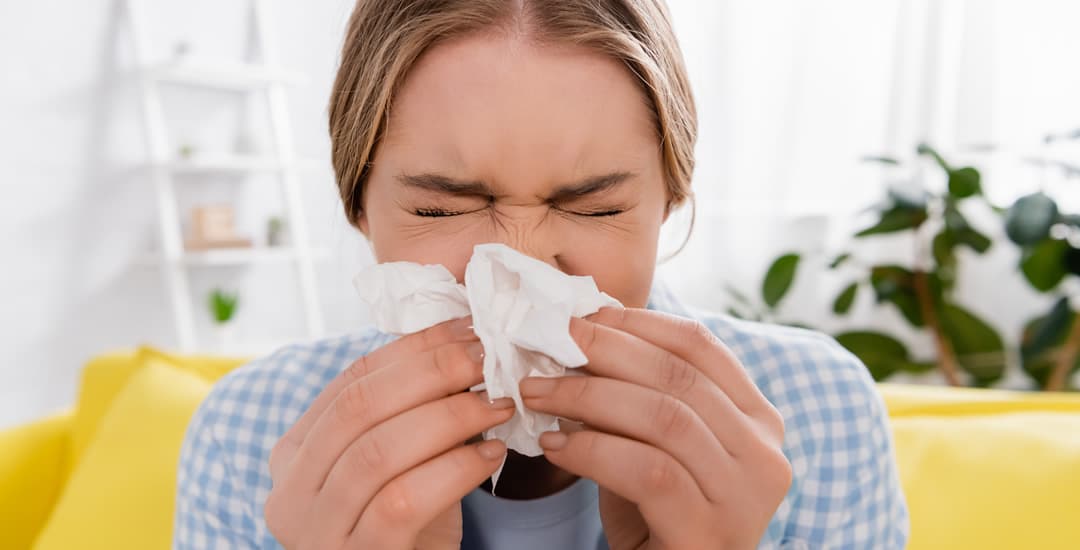
Gluten-free ones, obviously. Oh! Not that type of allergy. Assuming that blinds don’t make up a large part of your diet and your actual issue comes more from airborne allergens like pollen and pets, what blinds are best for allergies? Waterproof ones that are easy to clean and that have minimal horizontal surfaces to harbour dust.
This gives you a fairly large range of options, encompassing all but a couple of types of blinds, which I will also cover, along with why. This blog post will tell you what blinds are best for allergies and rank the best and worst blinds for allergy sufferers in order.
What blinds are best for allergies in general, and why?
As I mentioned in the intro, the best blinds for allergy sufferers are waterproof blinds of various types. Some of these are better than others, but as a rule, if you suffer from allergies you will want to restrict your choice of window coverings to waterproof blinds.
There are two reasons for this. The first is that the fabric types of non-waterproof blinds will tend to hold onto allergenic particles, like pollen and the proteins that pets carry in their saliva and spread via dander, which can then trigger pet allergies in those sensitive to them.
Over time, dust, shed skin cells, pollen, dander, and everything else particulate and airborne will start to infuse the fabric of say, a polyester, linen, silk, or other permeable blind fabric. You won’t necessarily be able to see this, as allergenic particles are usually small enough to be invisible; so even if your blind is clean and dust-free, blinds of this type can still harbour allergens.
Waterproof blinds are designed to be impermeable to water, which means that allergenic particles cannot weave their way into the fabric of the blind either. They can of course sit on top of the fabric or material (like dust can) but the other advantage of waterproof blinds for allergy sufferers is that you can then simply wash or wipe the blind off with a damp cloth to remove this invisible residue entirely.
This means you can both clean the blind thoroughly, and trap the allergens; whilst dusting a blind, which is the correct or more or less only way to clean a non-waterproof blind without damaging it, will just release the allergens back into the air, which is probably not what you were hoping to achieve.
What are the best blinds for hay fever sufferers?
If you only get mild hay fever or find that it only bothers you a few days a year, factoring your allergy into your choice of blinds might well be kind of overkill.
However, if your hay fever is acute and/or accompanied by general allergies to airborne particles, I would again suggest avoiding fabric blinds that aren’t waterproof, as these are apt to harbour allergens to a degree, and following the guidance below on the best and worst blinds for allergy sufferers in general.
What are the best and worst blinds for allergy sufferers?
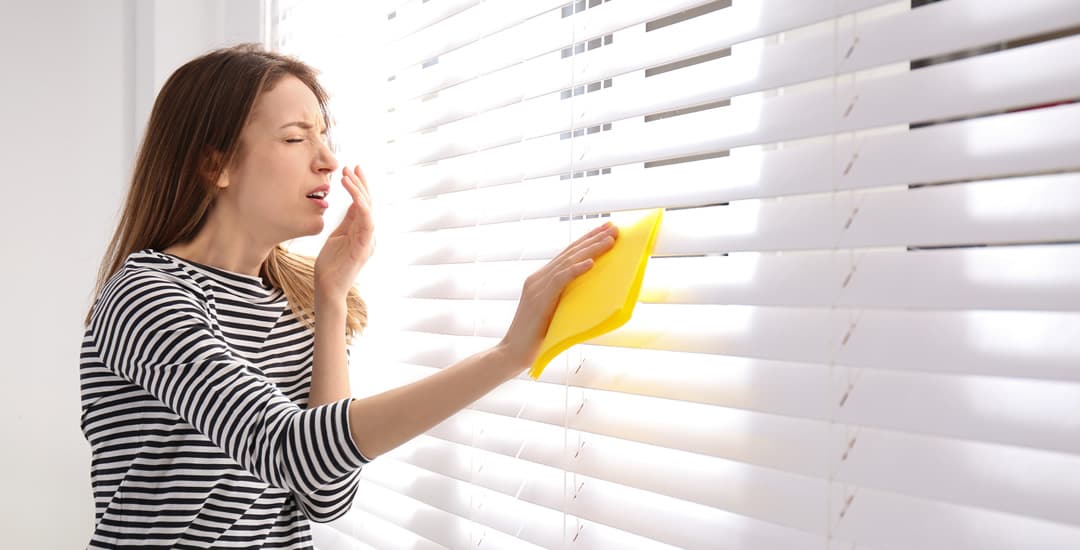
I’ve listed the best and worst blinds for allergy sufferers below, along with an explanation of why a blind ranks where I’ve placed it. This is intended as a guide rather than a definitive rulebook, and you should also take into account how your own allergies manifest and any other curveballs that might come into play.
With that caveat in mind, here are the best and worst blinds for allergy sufferers if you’re trying to reduce the impact of airborne triggers.
1. The best blinds for allergy sufferers are waterproof roller blinds
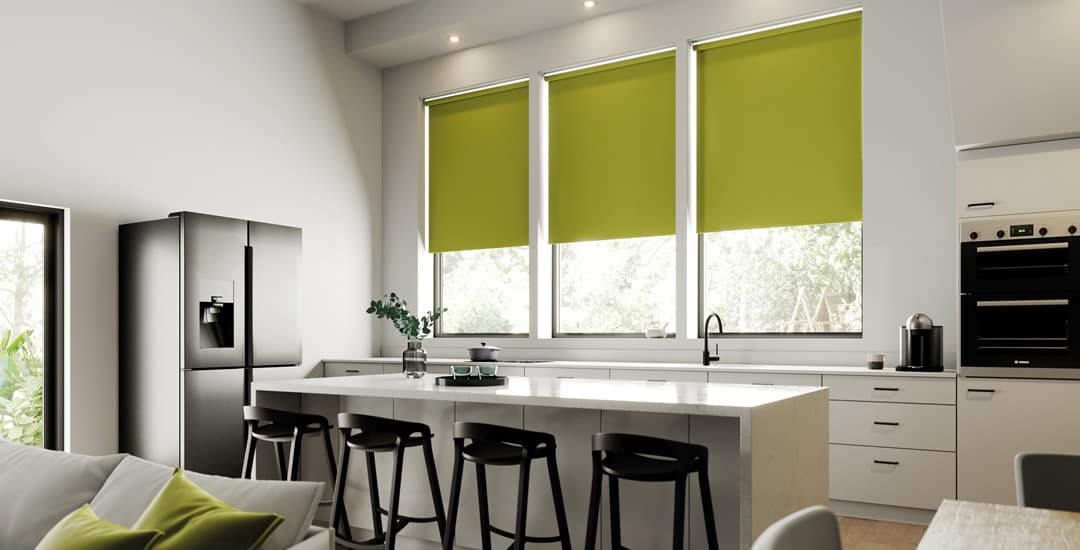
Waterproof roller blinds are the best blinds for allergy sufferers. Waterproof roller blinds are those made of either PVC or vinyl rather than polyester; and the reason they’re in first place is because they tick all of the boxes that make a blind allergy-friendly, or a good ally in your fight against a flare-up.
First of all, they’re waterproof, which means that allergenic particles won’t permeate their fabric. This also means that you can wash/wipe the blind off to remove dust and allergens lingering on the outside of it.
They’re made of one single piece of fabric rather than having slats, which means that the only horizontal surface that they present for dust to sit on is the bottom bar, and also that when the blind is closed, it forms one uninterrupted sheet of fabric that helps to insulate the window from both cold and heat loss, and minute airborne particles coming from outside.
2. Waterproof vertical blinds
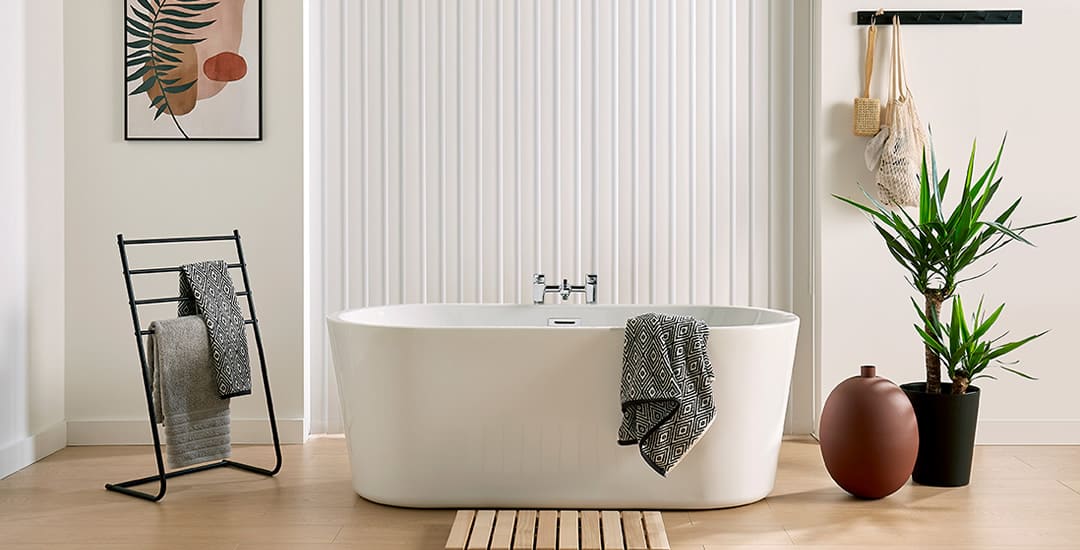
The second-best blinds for allergy sufferers are waterproof vertical blinds. Like waterproof roller blinds, these are made of either vinyl or PVC, which means that their fabric doesn’t catch and hold onto allergens and also that they can be washed or wiped clean.
Plus, they don’t have a bunch of horizontal surfaces for dust and allergens to cling to; and they are in fact the best choice of blind if you’re looking for minimal dusting, given that they hang vertically. However, the fact that vertical blinds are comprised of louvres means that I rank them just a shade below waterproof roller blinds for allergies, because air movement from the window can disturb the louvres, and the tiny gaps between them (even when closed) don’t present a solid sheet of fabric as a barrier.
3. Faux-wood blinds
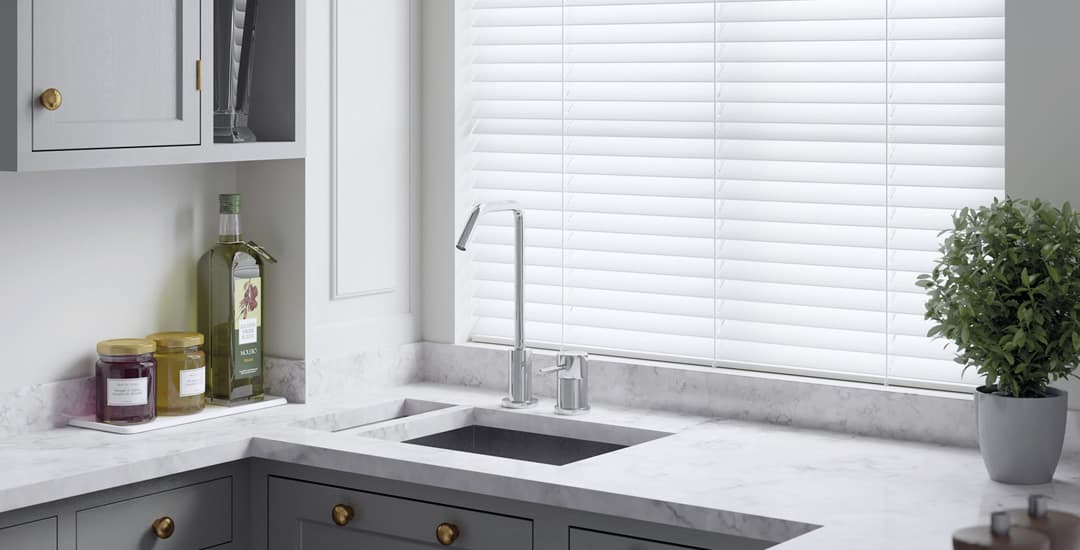
Faux-wood blinds are also waterproof, and made of sturdy PVC, which is easy to wipe or wash clean. However, the slats of faux-wood blinds do mean that they have plenty of horizontal dust-gathering surfaces to potentially provide seating for allergenic particles.
4. Venetian blinds
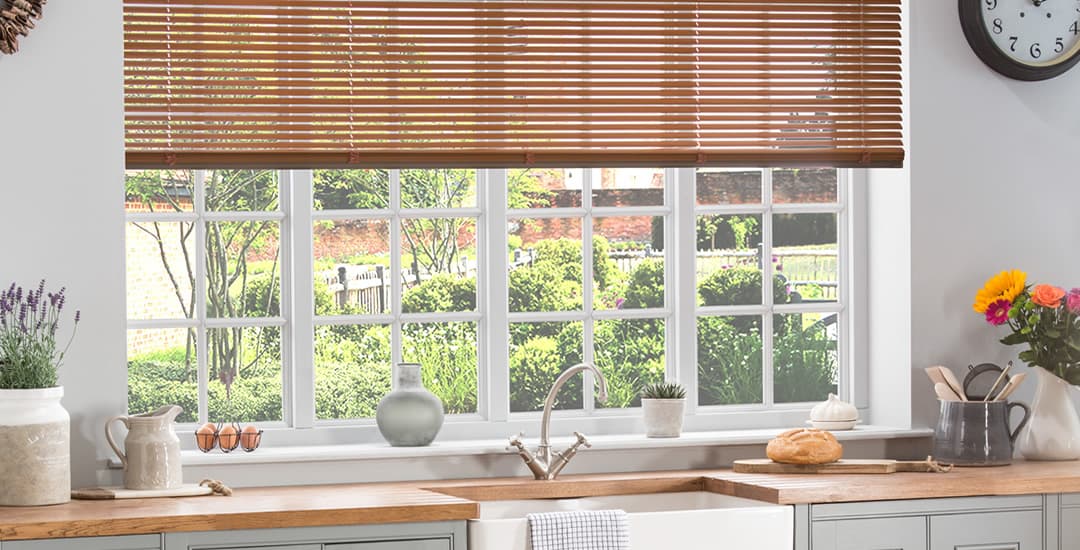
Venetian blinds are made of stove-enamelled aluminium, which is itself waterproof and so can be wiped or washed clean; however, the lift cords that hold these slats up are not, so try to avoid getting them too wet.
I’ve ranked Venetian blinds below faux-wood blinds in terms of their prowess at allergy prevention due to the fact that they’re not entirely waterproof; and because the slats of Venetian blinds are narrower than the common options available for faux-wood blinds, meaning that they have more horizontal surfaces to gather dust.
5. Wooden blinds
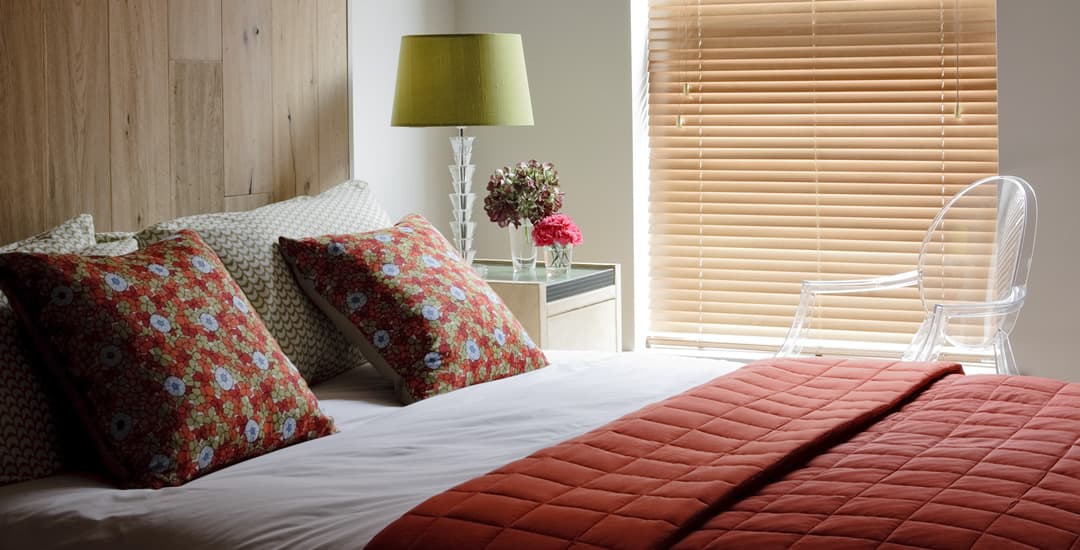
Wooden blinds come fifth for me, and we’re now getting into the realms of the sort of blinds that you would want to discount if your allergies are acute or hard to manage. This is firstly because wooden blinds aren’t waterproof and so theoretically, you can only dry-dust them without eventually causing damage, which is not as effective as wiping a blind off with a damp cloth or a cleaning wipe.
Also, these too are constructed of multiple horizontal slats, which are apt to gather dust.
6. Fabric (polyester) roller blinds
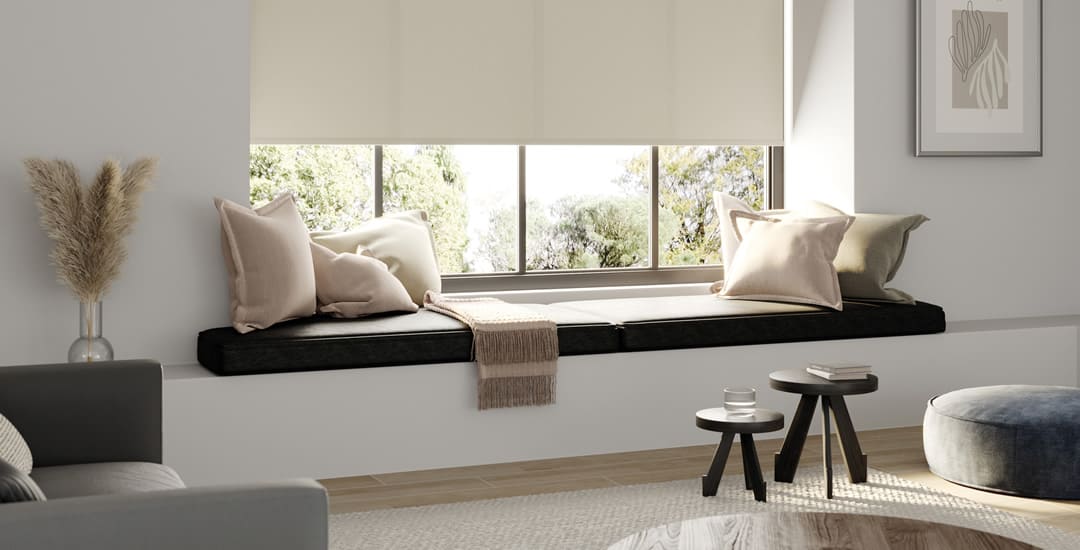
Fabric polyester/non-waterproof roller blinds see us starting to roll slowly down the hill into the realms of the worst blinds for allergy sufferers; because they’re not waterproof and so, will both trap allergenic particles, and can’t be washed thoroughly to remove them when they do. They can also provide a hospitable home for dust mites.
You can, however, use a vacuum cleaner attachment on a low powered setting to draw dust out of polyester roller blinds, albeit this isn’t an exact science. On the plus side, as a solid sheet of fabric hanging vertically makes up the main part of the blind, they don’t offer many surfaces for dust to settle on.
7. Fabric (polyester) vertical blinds
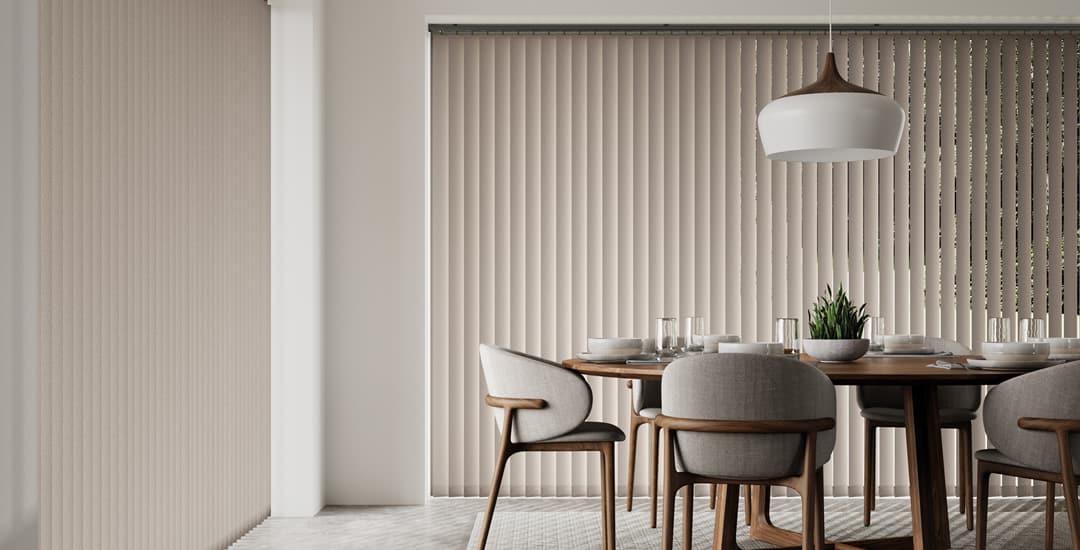
Fabric vertical blinds (also polyester) are again, not waterproof, meaning that the fabric will trap and hold onto particles that can trigger allergies, dust mites included, and also because they can’t be wiped or washed clean.
The fact that they hang vertically is a point in their favour in terms of reducing dust build-up, and you can again potentially vacuum the louvres of the blind with great care and on a low setting, but this is unlikely to be wholly effective, and will be very fiddly and time-consuming.
8. Day and night blinds
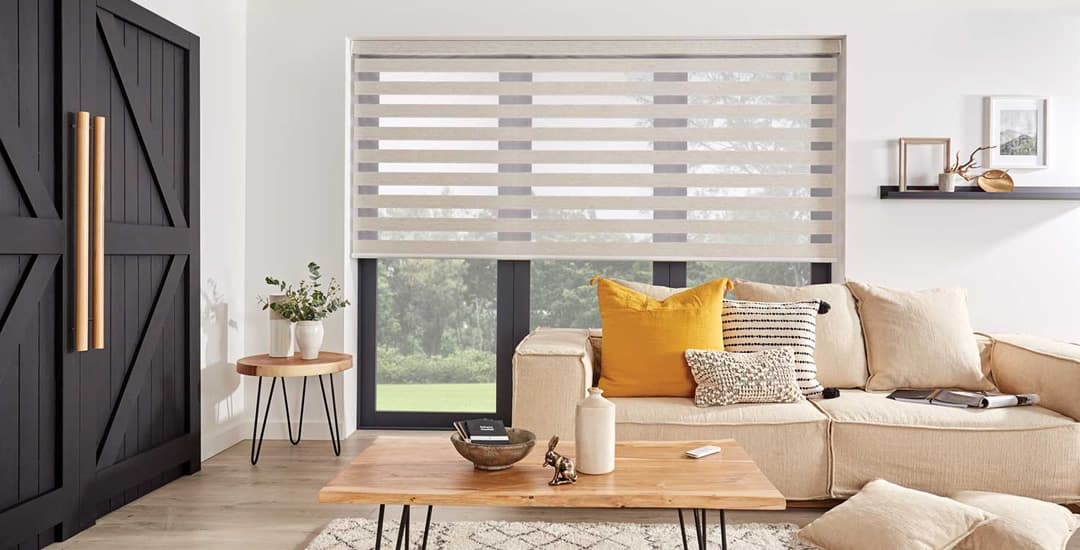
Day and night blinds are my second-worst blind for allergy sufferers. These are again polyester, and are not waterproof. They’re actually a type of roller blind; but the reason I haven’t given them joint sixth place billing with polyester roller blinds and have instead ranked them below polyester vertical blinds is because the sheer stripes of their fabric are quite delicate.
This means that you cannot safely use a vacuum cleaner to draw dust, dust mites, and other allergens out of them, nor can you wash or wipe them clean. Their lack of horizontal surfaces means that visible dust won’t sit on them; but also, allergens don’t only move in a horizontal manner, and can again permeate their fabric!
9. Roman blinds are the worst blinds for allergy sufferers
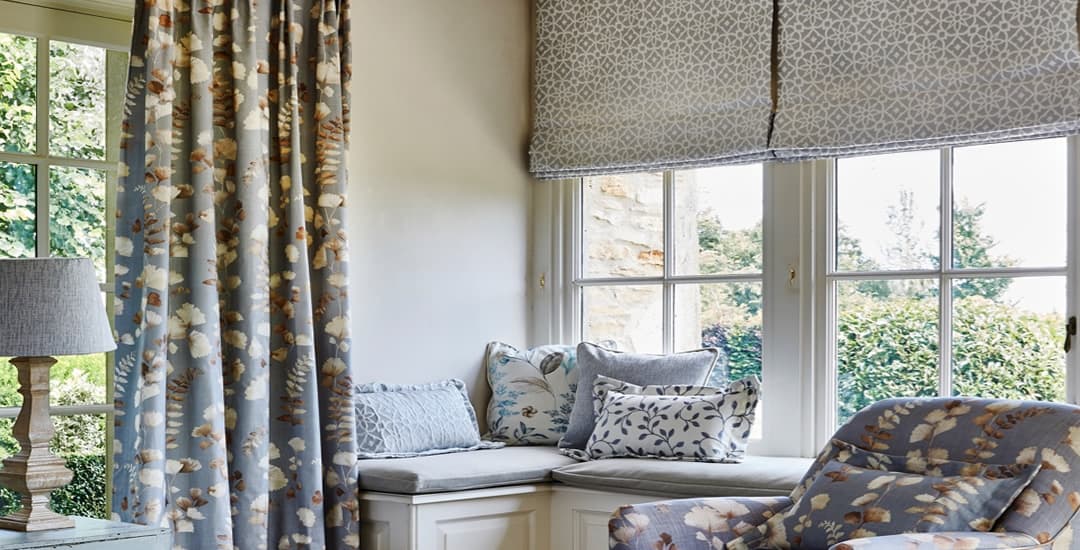
Finally then, what is the worst blind for allergy sufferers overall? Roman blinds. Roman blinds tick all of the boxes for being a superb potential host to airborne allergens, and so if you do suffer from acute allergies, these might be best avoided.
First up, they’re not waterproof; Roman blinds can be made from a number of materials including cotton, silk, linen, satin, velvet, and others, sometimes incorporating several types of fabric into one blind. As a non-waterproof fabric blind, this means that they can harbour dust mites, regular dust, and airborne particles quite effectively.
They cannot be washed or wiped clean, and when open, a Roman blind concertina’s up into a series of pleats onto which dust can settle.
Also, because they’re a luxury product made of often costly and commonly delicate fabrics, setting at them with a vacuum cleaner attachment is strongly discouraged too, so there is not a lot you can do to help to reduce allergens with a blind of this type.




